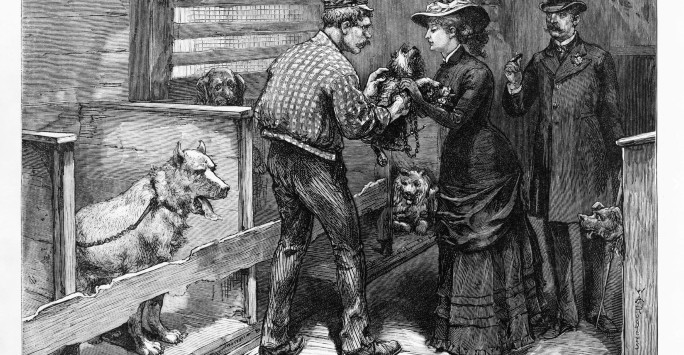Dogopolis. How Dogs and Humans Made Modern New York, London, and Paris

Image credit: Library of Congress, Control Number: 93512104.
Dr Chris Pearson has recently published a book entitled Dogopolis. How Dogs and Humans Made Modern New York, London, and Paris in the University of Chicago Press’s Animal Lives series.
Dr Pearson said: “This book shows how a model of Western human-canine relations – dogopolis – emerged in modern London, New York, and Paris. Dogopolis was the arrangement that arose amongst the middle classes of these cities on how urban dogs should cohabit cities with humans. Between 1800 and the 1930s, dogs and humans were thrown together in rapidly expanding cities, generating a host of feelings: love, compassion, disgust, and fear. Dogs were eventually integrated into city life in line with middle class emotional values that centred on revulsion at dirt, fears of vagabondage, anxieties about crime, and the promotion of humanitarian sentiments.
By the late 1930s, fears of biting and straying dogs had diminished; canine death had been rendered mostly acceptable through the management of canine suffering; dogs fulfilled emotional roles as pets and as police dogs (who in theory soothed worries about criminality); and the first steps had been taken to reduce the disgust provoked by canine defecation.
The emotionally-charged transnational attempts to harness, constrain or eliminate canine straying, biting, suffering, thinking, and defecating became part of the making of Western urban modernity. Dogopolis did not obliterate earlier aspects of human-dog relations. Some dogs kept on straying and biting, and dog mess remained an unresolved problem. But the place of dogs within the Western city was assured and a model of urban human-dog cohabitation established, within which Western urbanites still reside.”
Find out more about the book on the University of Chicago Press website.
You can read an extract on the Lapham’s Quarterly website and listen to a BBC History Extra podcast about Dogopolis.